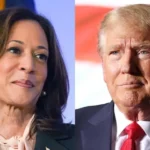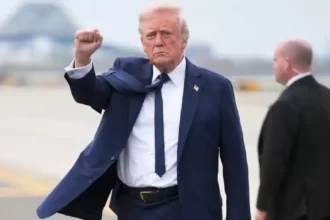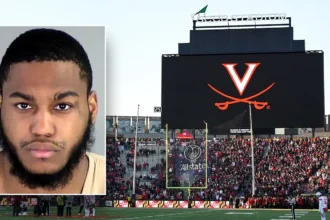Former President Barack Obama is returning to the campaign trail this weekend, making high-profile appearances in Virginia and New Jersey to rally Democratic voters ahead of pivotal gubernatorial elections. The move highlights both the urgency and uncertainty within the Democratic Party as it confronts a political landscape increasingly defined by President Donald Trump’s commanding presence.
Obama’s re-entry into the campaign spotlight comes at a time when Democrats are fighting to hold ground in two states long seen as indicators of national mood. In Virginia, Democrat Abigail Spanberger is seeking to succeed Republican Governor Glenn Youngkin, while in New Jersey, Democrat Mikie Sherrill faces Republican Jack Ciattarelli, a candidate closely aligned with President Trump’s policy vision. Both races are widely viewed as early tests of how voters are responding to Trump’s second term and his continued influence over the Republican Party.
The former president’s decision to campaign in person underscores how seriously Democrats view these contests. Obama is scheduled to appear alongside Spanberger in Norfolk, Virginia, before heading to Newark, New Jersey, to energize supporters of Sherrill. The timing—just days before Election Day—is strategic, aiming to boost enthusiasm and turnout among undecided and low-propensity voters.
In both states, the stakes extend far beyond local governance. Democratic strategists see these races as opportunities to demonstrate the party’s ability to compete effectively in a Trump-dominated political era. Conversely, victories for Trump-aligned Republicans could reinforce the perception that the former president’s movement remains ascendant across the country.
Obama’s campaign push serves a dual purpose: to rally Democrats around a unifying message and to remind voters that political engagement remains vital even in off-year elections. “This is about showing we can still win, that we can still deliver results,” Obama told supporters earlier this week. His appearances are designed to project confidence and counter the narrative that Democrats are adrift under the shadow of Trump’s renewed power.
President Trump, for his part, continues to command significant influence over Republican politics. His endorsements have shaped primaries, redefined messaging, and tightened party discipline. Candidates who embrace Trump’s rhetoric and policy positions—emphasizing immigration enforcement, economic nationalism, and populist conservatism—have found success in both state and national arenas. For Democrats, the challenge is clear: find a message that resonates in this new environment while distinguishing themselves from being seen merely as the anti-Trump party.
In Virginia, Spanberger’s campaign has centered on economic opportunity, education, and healthcare affordability. She has walked a fine line—emphasizing moderation and pragmatic governance while appealing to progressives energized by opposition to Trump’s agenda. Her Republican opponent has leaned heavily on Trump’s endorsements and policy record, portraying the election as a referendum on conservative governance.
In New Jersey, Sherrill’s challenge is slightly different. While the state has leaned Democratic in recent national elections, Trump’s backing of Ciattarelli has energized conservative voters, particularly in suburban and rural areas. Democrats are relying on urban turnout and a strong ground game to maintain control. Obama’s presence in the state is expected to help galvanize volunteers and encourage voter participation during the final stretch of the campaign.
The symbolic weight of Obama’s involvement cannot be understated. For Democrats, his charisma, national stature, and enduring popularity represent a vital counterbalance to President Trump’s dominance of the political stage. For Republicans, his re-emergence serves as a reminder of the ideological contrast that continues to define American politics.
Beyond the immediate contests, the implications are national. Political observers see these state elections as testing grounds for both parties’ strategies ahead of the 2026 midterms and the 2028 presidential race. If Democrats manage to secure wins, it could signal resilience and adaptability under the pressures of the Trump era. Losses, however, would raise difficult questions about the party’s messaging, leadership, and voter outreach.
Obama’s rallies also highlight an underlying tension within the Democratic Party: the need to modernize its message while staying true to core values. As Trump reshapes the Republican brand into one defined by populism and confrontation, Democrats are wrestling with how to appeal to the same working-class and independent voters who powered Trump’s victories.
Ultimately, Obama’s campaign trail revival is as much about morale as it is about math. By stepping forward, he seeks to remind Democrats of their capacity to fight back—both politically and culturally—against the forces that have redefined American politics under President Trump. His appearances in Virginia and New Jersey may not decide the national balance of power, but they are part of a broader Democratic effort to reclaim momentum and identity in a landscape still dominated by Trump’s formidable presence.
As Election Day approaches, all eyes are on whether Obama’s intervention can shift momentum. Win or lose, the outcomes will reverberate far beyond state borders—signaling whether Democrats can regain footing or whether President Donald Trump’s political resurgence remains unchallenged.









